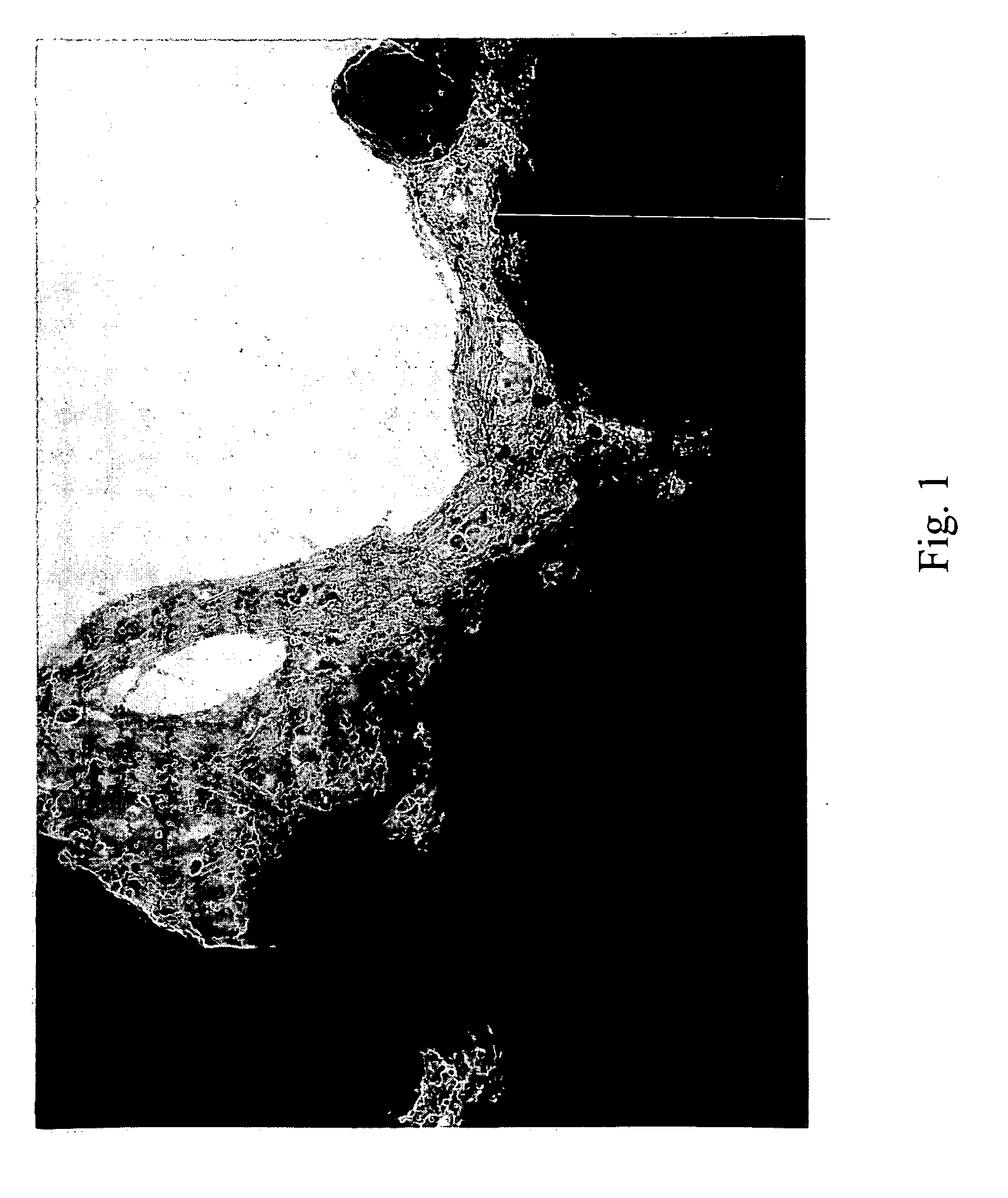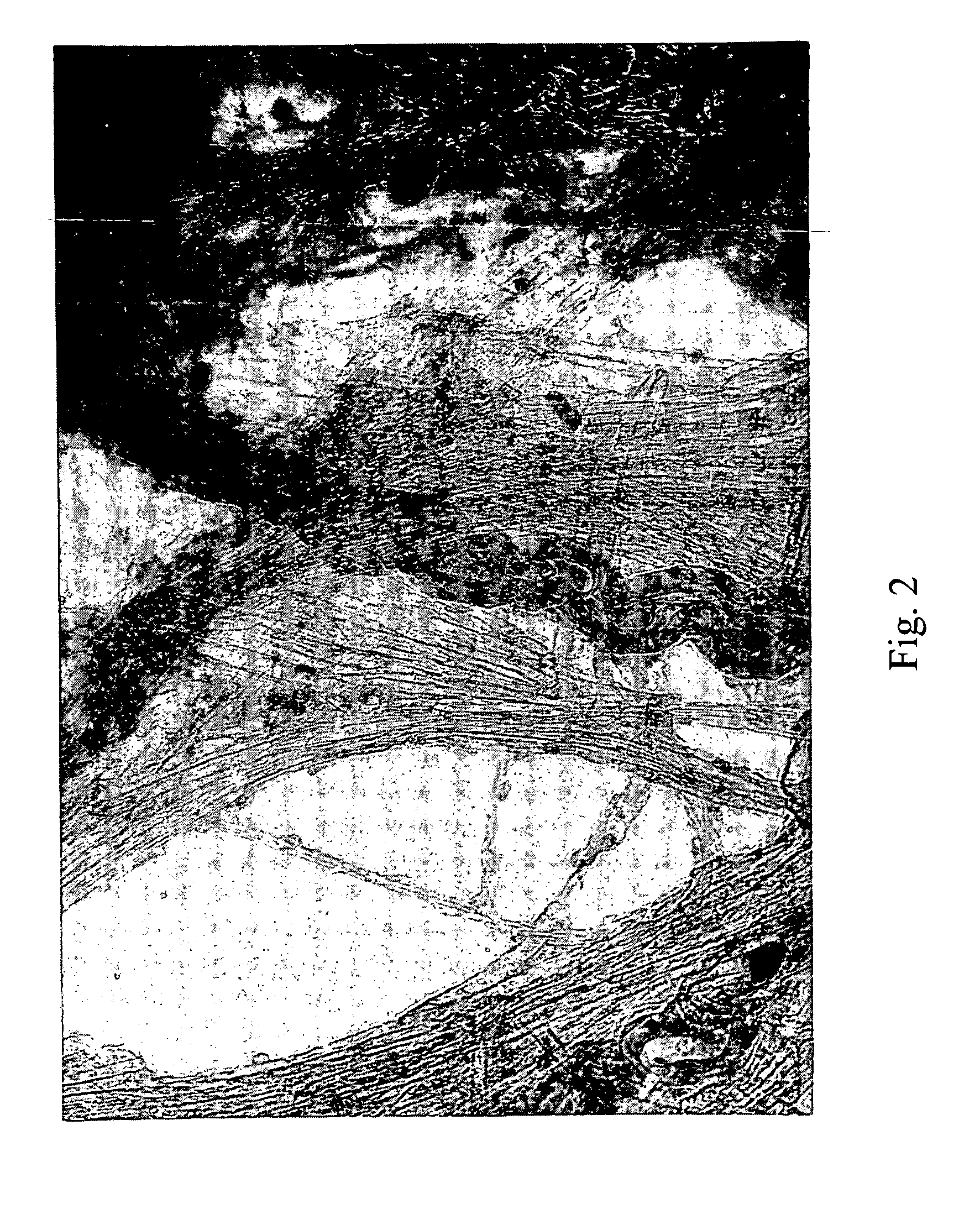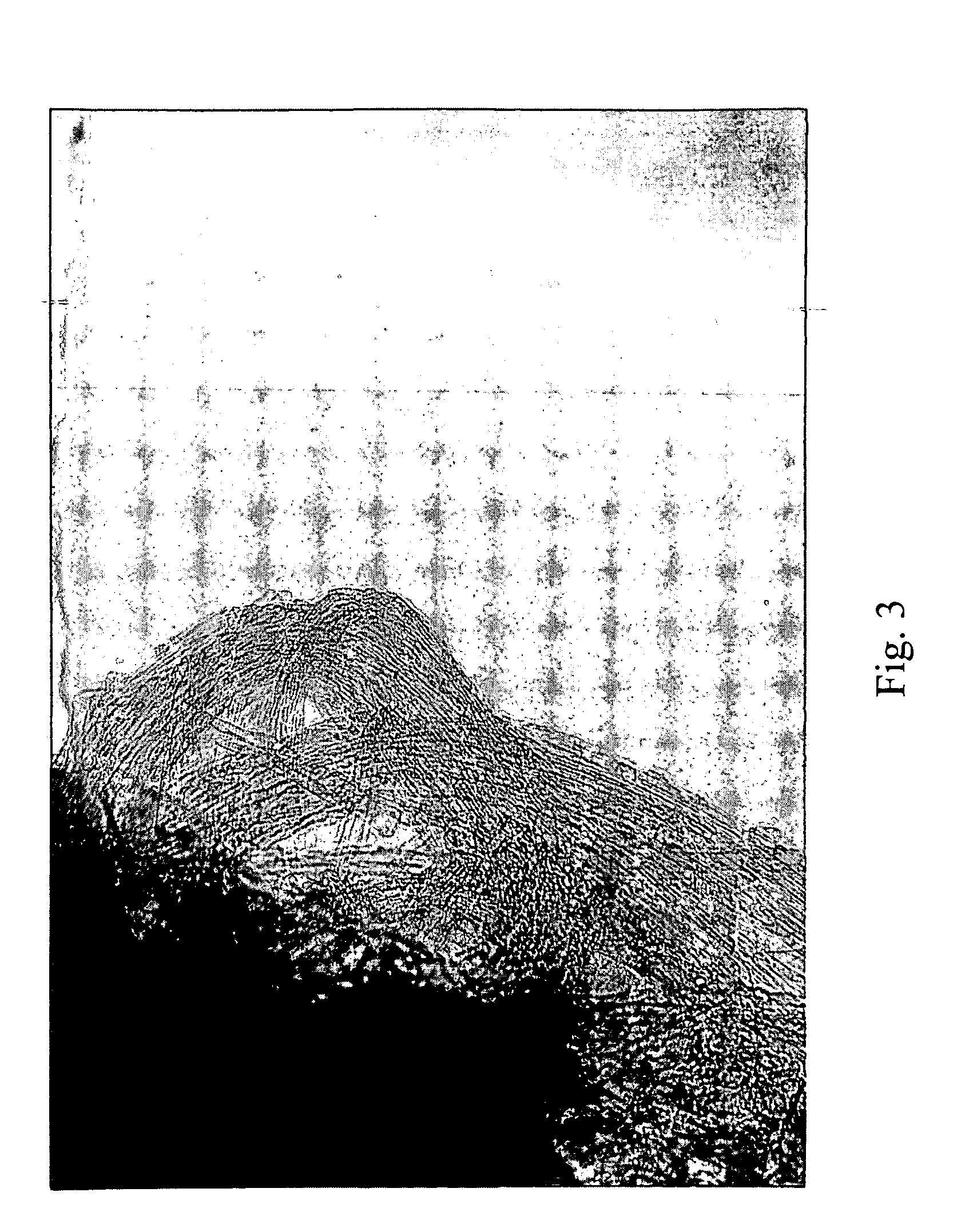Method of producing single-walled carbon nanotubes
a carbon nanotube and single-walled technology, applied in the field of single-walled carbon nanotube production, can solve the problems of inability to produce nanotube quantities of single-walled carbon nanotubes, inability to manufacture quantities of nanotubes by the method using these catalysts, and inability to produce nanotube quantities, etc., to achieve the effect of avoiding defects and disadvantages
- Summary
- Abstract
- Description
- Claims
- Application Information
AI Technical Summary
Benefits of technology
Problems solved by technology
Method used
Image
Examples
example 1
[0057] Bimetallic catalytic particles containing 10 wt % of mixed cobalt and molybdenum (1:1 ratio) on a silica substrate were prepared by the incipient wetness impregnation method, in which an appropriate amount of Cobalt Nitrate and Ammonium Heptamolybdate Tetrahydrate were dissolved together in deionized water and gradually dropped on the silica. Ceramic mortar and pestle were utilized to disperse the metals on silica. The resulting bimetallic catalytic particles were then left to dry at ambient conditions for a few hours. The partially dried bimetallic catalytic particles were then dried in an oven at 80° C. for 12 hours. The dry bimetallic catalytic particles were then calcined in flowing air at 450° C.
[0058] For production of nanotubes, 0.1 g of calcined bimetallic catalytic particles was placed in a vertical quartz tube reactor having an arc inside diameter of 8 mm. The vertical quartz tube reactor containing the calcined bimetallic catalytic particles was disposed inside a ...
example 2
[0061] Metallic catalytic particles containing the monometallic catalysts of Ni, Co or Mo supported on silica were also prepared by the same methodology described in Example 1, and their catalytic properties were compared to that of metallic catalytic particles containing the bimetallic catalyst. After conducting the same treatment in CO at 700° C. as described in Example 1, and doing the same transmission electron microscopic analysis, no single-walled carbon nanotubes were observed on these samples. This result indicates that there is a synergism between Co and Mo that makes the combination of two metals, which separately cannot produce Single-walled carbon nanotubes at this temperature, a very effective formulation.
example 3
[0062] A series of metallic catalytic particles containing 6 wt % Co—Mo bimetallic catalysts were prepared on different supports (SiO2, MCM-41, Al2O3, Mg(Al)O, and ZrO2), and their nanotube production abilities were compared, following the same CO disproportionation methodology as employed in Example 1. Table 1 summarizes the results of these experiments.
TABLE IEffect of Catalyst Support on Carbon Deposit MorphologyCatalystObserved Morphology of Carbon DepositsCo:Mo / SiO2major amount of single-walled carbon nanotubes,minor amounts of multi-walled carbon nanotubesand graphiteCo:Mo / MCM-41major amount of single-walled carbon nanotubes,minor amounts of multi-walled carbon nanotubesand graphiteCo:Mo / Al2O3minor amounts of single-and multi-walled carbonnanotubes and graphiteCo:Mo / Mg(Al)Ominor amount of graphite, small amount ofsingle-walled carbon nanotubesCo:Mo / ZrO2minor amount of graphite, small amount ofsingle-walled carbon nanotubes
PUM
| Property | Measurement | Unit |
|---|---|---|
| Temperature | aaaaa | aaaaa |
| Temperature | aaaaa | aaaaa |
| Fraction | aaaaa | aaaaa |
Abstract
Description
Claims
Application Information
 Login to View More
Login to View More - R&D
- Intellectual Property
- Life Sciences
- Materials
- Tech Scout
- Unparalleled Data Quality
- Higher Quality Content
- 60% Fewer Hallucinations
Browse by: Latest US Patents, China's latest patents, Technical Efficacy Thesaurus, Application Domain, Technology Topic, Popular Technical Reports.
© 2025 PatSnap. All rights reserved.Legal|Privacy policy|Modern Slavery Act Transparency Statement|Sitemap|About US| Contact US: help@patsnap.com



